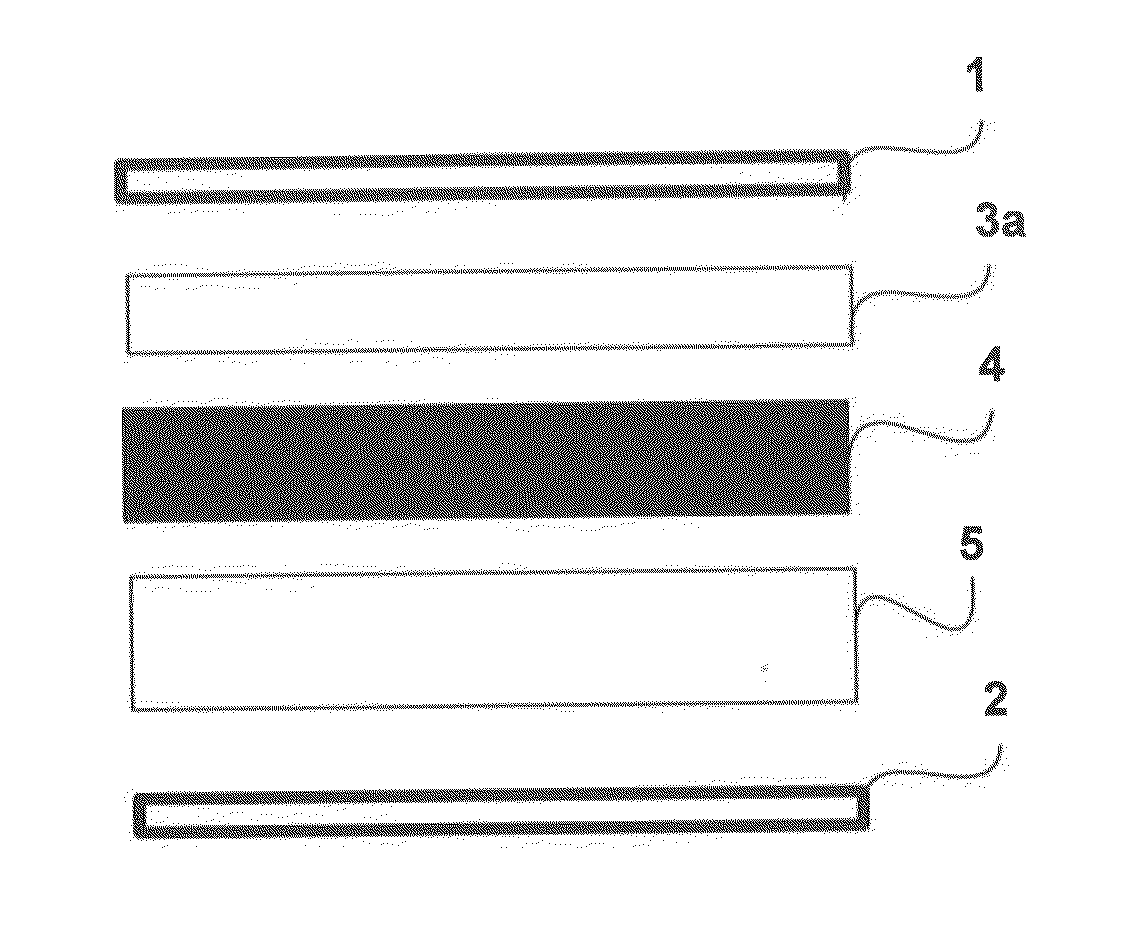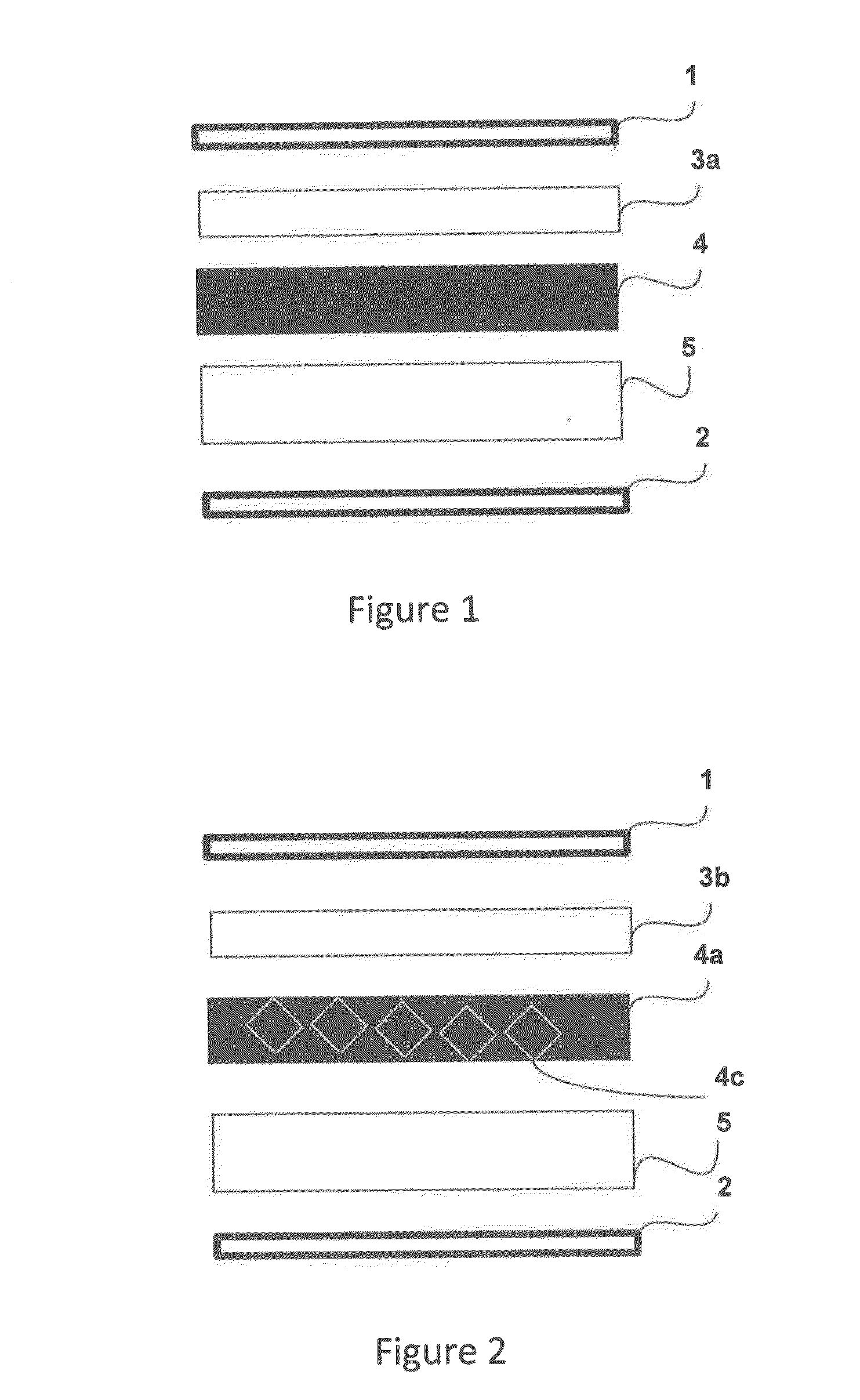Odour control material, method for preparation of an odour control material and an absorbent product comprising the odour control material
- Summary
- Abstract
- Description
- Claims
- Application Information
AI Technical Summary
Benefits of technology
Problems solved by technology
Method used
Image
Examples
example 1
Preparation of an Odour Control Material According to the Present Invention in the Form of Odour-Reducing Flakes Containing 50 Weight-% Activated Carbon in Polyethylene Oxide with a Molecular Weight of 100.000 Da (Material A)
[0091]5 g of activated carbon powder, Norit SA2, delivered by Sigma-Aldrich, was mixed in a beaker with 5 g polyethylene oxide powder with a molecular weight of 100.000 Da, also purchased from Sigma Aldrich. The beaker was placed in an oven at 130° C. for about 1 hour in order to melt the polyethylene oxide. During this period the blending was manually mixed using a stainless steel spoon. The blending was then placed between two Teflon cloths and a pre-heated steel plate and a pre-heated steel cylinder, both with a temperature of about 130° C. were used to manually compress the material to a film. This was achieved by placing the Teflon cloths on the heated plate and rolling the cylinder several times over the clothes until the material between the cloths had be...
example 2
Preparation of an Odour Control Material According to the Present Invention in the Form of Odour-Reducing Flakes Containing 50 Weight-% Activated Carbon in Polyethylene Oxide with a Molecular Weight of 600.000 Da (Material B)
[0092]5 g of activated carbon powder, Norit SA2, delivered by Sigma-Aldrich, was mixed in a beaker with 5 g polyethylene oxide powder with a molecular weight of 600.000 Da, also purchased from Sigma Aldrich. The beaker was placed in an oven at 130° C. for about 1 hour in order to melt the polyethylene oxide. During this period the blending was manually mixed using a stainless steel spoon. The blending was then placed between two Teflon cloths and a pre-heated steel plate and a pre-heated steel cylinder, both with a temperature of about 130° C. were used to manually compress the material to a film. This was achieved by placing the Teflon cloths on the heated plate and rolling the cylinder several times over the clothes until the material between the cloths had be...
example 3
Preparation of an Odour Control Material According to the Present Invention in the Form of Odour-Reducing Flakes Containing 50 Weight-% Activated Carbon in a Mixture of Saccharose and Glucose (Material C)
[0093]3.86 g granulated sugar from the company Dansukker was placed in a beaker and added 1.14 g distilled water. The mixture was slowly heated on a heating plate until all sugar had melted. Then, 1.14 g glucose with the trade name Dextropur, bought from a local food shop, was added and the temperature of the heating plate was increased. When the temperature of the sugar had reached about 152° C., 5 g activated carbon powder, Norit SA2, delivered by Sigma-Aldrich, was manually mixed into the melted sugar by the aid of a spoon of stainless steel. The mixture was then placed between two Teflon cloths and kept in an oven at about 150° C. for about 5 minutes. The Teflon cloths, with the mixture of melted sugar and activated carbon were then placed on a preheated steel plate, with a temp...
PUM
| Property | Measurement | Unit |
|---|---|---|
| Thickness | aaaaa | aaaaa |
| Length | aaaaa | aaaaa |
| Melting point | aaaaa | aaaaa |
Abstract
Description
Claims
Application Information
 Login to View More
Login to View More - R&D
- Intellectual Property
- Life Sciences
- Materials
- Tech Scout
- Unparalleled Data Quality
- Higher Quality Content
- 60% Fewer Hallucinations
Browse by: Latest US Patents, China's latest patents, Technical Efficacy Thesaurus, Application Domain, Technology Topic, Popular Technical Reports.
© 2025 PatSnap. All rights reserved.Legal|Privacy policy|Modern Slavery Act Transparency Statement|Sitemap|About US| Contact US: help@patsnap.com



